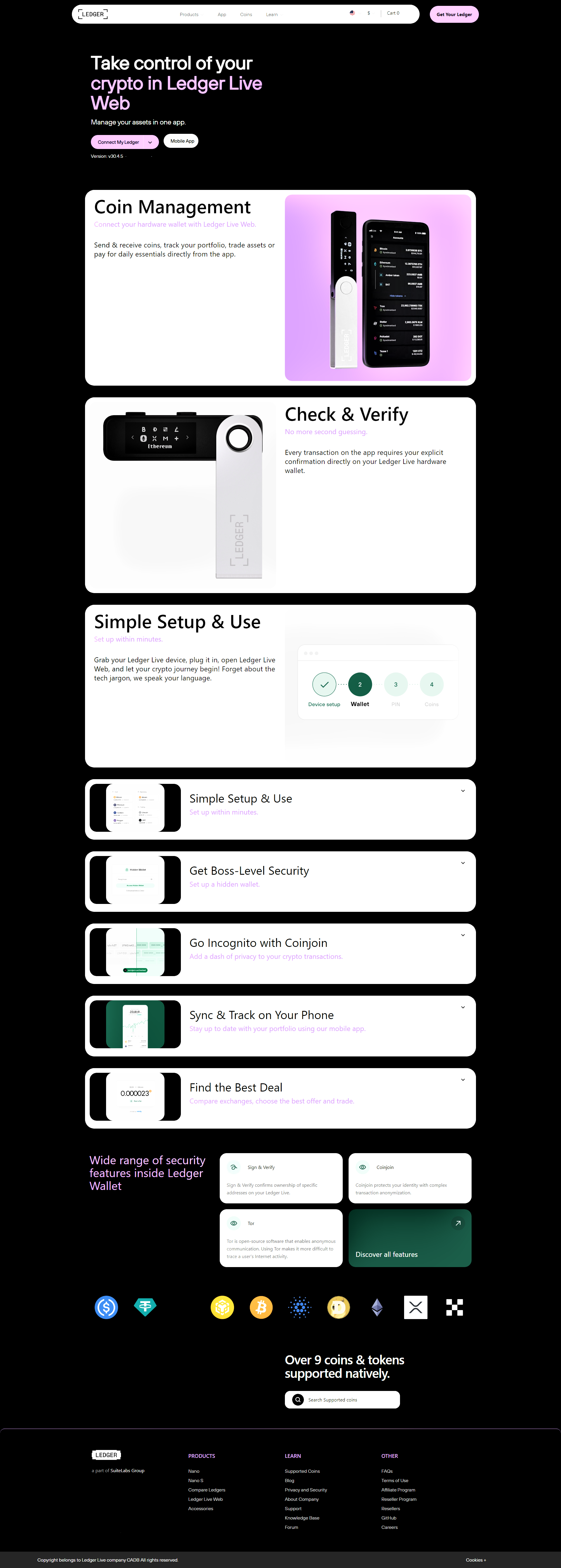Ledger Live Desktop — Secure Portfolio Management
Ledger Live Desktop is the official companion application for Ledger hardware wallets, designed to provide secure, convenient, and unified control over digital assets. It allows users to manage accounts, verify transactions, and monitor balances directly from their computer while maintaining hardware-based private key protection.
Introduction
Ledger Live Desktop integrates seamlessly with Ledger Nano X, Nano S Plus, and Nano S hardware wallets. It creates a secure communication bridge between your hardware device and the blockchain, ensuring that private keys remain isolated on the device at all times. The software interface enables balance monitoring, portfolio analytics, transaction history, and application updates — all within a trusted environment verified by Ledger.
Core Features
- Secure account management: Add and manage crypto accounts while keeping private keys offline.
- Transaction verification: Each operation must be physically confirmed on the hardware device to ensure integrity.
- Portfolio overview: Consolidate your crypto holdings in a single, encrypted desktop dashboard.
- Integrated apps: Access compatible blockchain applications through a unified interface.
- Regular updates: Ledger Live Desktop receives continuous feature and security enhancements through official updates.
Security Architecture
The security model of Ledger Live Desktop is based on the principle of non-custodial control. All sensitive operations — including key generation, signing, and recovery — occur exclusively on the hardware wallet. The desktop app never stores or transmits private keys. Instead, it facilitates signed transactions using encrypted communication channels.
End-to-end encryption, verified firmware, and controlled update channels ensure that the application operates within Ledger’s secure framework. The desktop software should always be downloaded only from Ledger.com.
Installation and Setup (Informational)
To install Ledger Live Desktop, obtain the latest version from the official Ledger website. After installation, connect your Ledger device using the supplied USB cable and follow the on-screen instructions. The app will recognize the device, verify firmware authenticity, and allow account synchronization for supported assets.
Initial synchronization may take several minutes depending on network conditions and the number of accounts. Once completed, balances and transaction histories appear securely in your dashboard.
Ongoing Operations
Ledger Live Desktop enables easy viewing of real-time balances and historical trends. Users can manage staking, receive funds, or initiate transactions with device confirmation. Each transaction must be reviewed and approved on the Ledger device itself — this final confirmation step protects users from remote tampering or malware-injected transactions.
Maintenance and Updates
Keep Ledger Live Desktop updated to the latest release. Updates include protocol improvements, new asset integrations, and critical security patches. Users should always verify update notices through official channels. Avoid third-party mirrors or unofficial download links.
Ledger recommends periodic firmware checks and ensuring that both the hardware and software versions remain synchronized. Automatic notifications in Ledger Live Desktop provide a secure mechanism for version verification.
Troubleshooting and Support
Common operational issues may include connectivity interruptions, synchronization delays, or USB recognition problems. These are typically resolved by updating both the Ledger device firmware and the Ledger Live Desktop version. If problems persist, refer to official support documentation or use Ledger’s verified Help Center.
Best Practices
- Download Ledger Live Desktop only from the official website.
- Always confirm transactions on your hardware device screen.
- Never disclose your recovery phrase — not even to Ledger support.
- Enable password lock in Ledger Live for local protection.
- Maintain offline backups of your recovery phrase in secure physical locations.
Conclusion
Ledger Live Desktop stands at the core of a comprehensive digital asset protection ecosystem. It unites usability with rigorous security, allowing users to interact with the blockchain confidently while maintaining full ownership of their keys. Through disciplined usage, software hygiene, and adherence to official procedures, Ledger Live Desktop helps ensure that your digital assets remain safe, private, and fully under your control.
